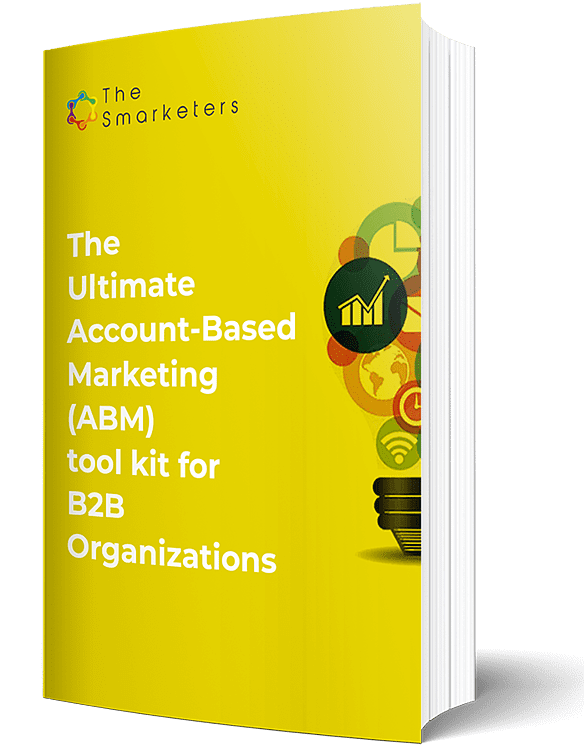Are you looking to get started with your own ABM pilot program? Despite all the impressive evidence, are you still on the fence about it? Is your organization uncertain about the effectiveness of ABM?
All these questions and doubts are valid concerns. There’s no denying the fact that account-based marketing can open the floodgates to sustainable revenue when done correctly. However, marketers struggle with uncertainties, like how much resources they should allocate, how much ROI it will generate, and what real-world problems it can solve.
And, the best way to clear these doubts is by launching an ABM pilot program.
What ABM Pilot?
An ABM pilot, or an Account-Based Marketing pilot campaign, is a best practice approach to launching full ABM programs. ABM pilots are designed to outline the activities, timescales, and expected outcomes of a comprehensive ABM campaign. They serve as a testing phase or account-based marketing POC before implementing a full-scale ABM strategy, helping establish realistic goals while ensuring that teams have the necessary resources.
Why ABM Pilot?
Running a pilot program with existing resources is a great way to check how a highly-targeted personalized marketing activity would work on your target accounts.
This helps set realistic goals and expectations from ABM and scrutinizes the resource and organizational readiness ahead of a full ABM campaign. Based on the outcomes of the pilot program, your company can draw out a plan to invest in the technology, media, data and employees required for a full-scale deployment.
Are you wondering about how to get started with an ABM pilot before taking a full-fledged dive into it?
Fret not, we are here today to guide you. From planning to execution, we’ll explore the key characteristics of a successful ABM pilot program, step-by-step.
Step 1 – Define Pilot Program Scope
The first step is defining and developing the program scope. The outline should be limited and time-bound with clear goals and expectations so that the team can refer back to for guidance. The scope should include:
- Duration of the pilot program
- The team that would work on it
- Roles and responsibilities of each team member
- Size of the target accounts
Our team of ABM experts advises starting small. Three months is an ideal time to evaluate the success of the program. Duration less than that is too short to see measurable results and duration more than that runs the risk of falling off track. Narrow down on one sales/account representative and select 5-10 target accounts, which will participate in this trial period. As the pilot program is set in motion during the pre-investment phase where a lot of work has to be done manually without a comprehensive tech stack, it is only practical to keep it small and tight with a set time frame.
Step 2 – Define Key Metrics
Fight the urge to solve too many problems through the pilot program. It can be tempting to run marketing campaigns that address all sales objectives and problems of the short-listed target accounts. But it is important that you stick to 2-3 key metrics only for each target account.
The sales representative plays an important role in defining these metrics. Sit with them and assess the launch point, stage of the sales cycle, customer profile, and target buyer insights to figure out the right ABM key performance indicators that you should be looking at.
 Step 3 – Implement Personalization And Content Strategy
Step 3 – Implement Personalization And Content Strategy
ABM relies heavily on personalization and tailored content. The key is to develop an ABM pilot strategy for creating personalized content that aligns with the needs and interests of your target accounts. This can involve creating account-specific messaging, customizing marketing collateral, and utilizing AI technologies to optimize content creation and delivery.
Step 4 – Check On The Target Accounts
At this stage, look for the early signs of changes within the target accounts and leverage the targeted approach of ABM by customizing the campaign touch-points while the pilot is in motion. You can play with the measurement criteria, customize the touch-point content and fine-tune the reporting requirements as the pilot progresses from month to month. You can also compare the performance of ABM pilot accounts with other similar accounts that are not a part of the ABM pilot to identify any differences.
Step 5 – Analyze The Results
The final step is to determine if executing ABM at scale makes sense for your business or not by looking at the KPIs of the pilot program. If you noticed positive results, also check if it can be turned into a repeatable process at scale with technology and automation.
Can you gain organizational buy-in?
What kind of tech stack is required to support more scalable efforts and how would that impact the ABM budget? If the results were unsatisfactory or inconclusive, go back to the moodboard and assess your ABM pilot’s scope and metrics to identify the gaps and redesign accordingly.
The ABM Checklist
While B2B sales teams have taken the account-based approach for client conversion and revenue generation, B2B marketers have been slow on the uptake. Recent surveys reveal the numbers have changed. 97% of marketers believe account-based marketing generates higher ROI than other marketing forms, and 87% believe ABM is a more effective marketing strategy.
Before starting your ABM program, check out the 5 parameters examining whether ABM is the right fit for your company.
- Length of sales cycle (>180 days)
- Average contract value (ACV) – It is best if the ACV of your high-value customers is closer to $30k.
- Check if you have hybrid sales (product+consultation+training) in place. B2B companies selling expertise on top of products are especially fit to adopt ABM programs. The hybrid sales format includes product training, consultation regarding product implementation, and best practices training.
- Consider your TAM or target addressable market: the number of companies you are catering to.
- The number of buyers influencing the buying decision. If your company deals with multiple people in vendor evaluation and the buying process, having an ABM strategy is the right choice.
Account-based marketing is a highly personalized strategy, so it can absorb as many tweaks as required to achieve marketing and sales goals. That’s the beauty of it. If you need any help with your ABM pilot program or need assistance in planning and execution or want more information about where your organization is placed on the ABM readiness scale, then do get in touch with us.













